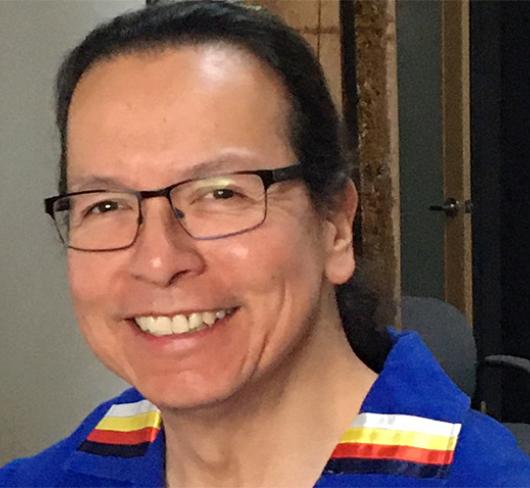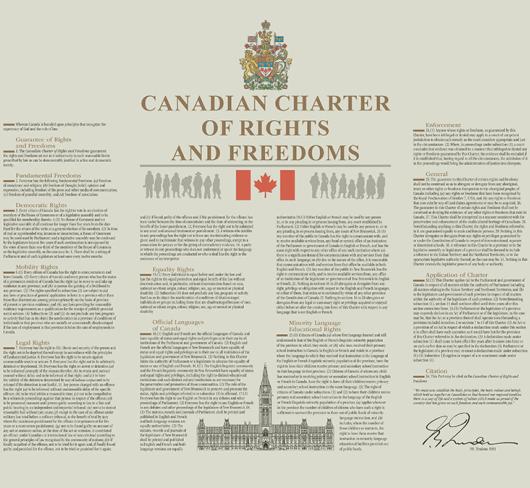
Looking at History Through a Critical Literacy Lens
In 2019, just before the world as we knew it tilted on its head, my Grade 7 class and I explored Canadian history, particularly the Seven Years’ War and the War of 1812. We explored the impact of these wars on North America (as we know it today) and their influence in shaping Canadian history. Most significantly, we explored the missing voices in these pivotal moments of Canadian history, identifying similarities and differences in how Black people, women and Indigenous Peoples were treated during and after the wars. These were connections students made to their learning in other subject areas as we had explored Indigenous history in Canada and started our exploration of Black history. Part of our intention with this project was to expand our definition of literacy as we worked to contextualize our experiences today in our understanding of Canadian history. I was especially interested in exploring how to cultivate critical literacy with my students concerning these questions.
When students began considering their questions, they expressed frustration at the many missing pieces of history in their texts, making too many of their answers challenging to find. As they did more research and their understandings expanded, students began to make connections looking at the similarities and differences in the treatment of Black people, women and Indigenous Peoples then and how they are treated in Canadian society today. Students noted that many positive changes had been made; however, many more changes still needed to occur. For instance, many students raised questions about the lack of representation and inclusion of Black people in positions of power and decision making. They asked why Indigenous people continued to lack proper recognition for the many contributions they have made to Canada, as well as why many Indigenous communities continue to have to fight for access to basic human rights such as clean water and funding for Indigenous children. A few students wondered why the contributions of women are not as widely celebrated and memorialized as the contributions of men are, even in contemporary society. Students had many questions and critical literacy was a tool they used to explore their thinking.
To do their research and refine their inquiry, students used primary and secondary sources such as images, diary accounts, textbooks and additional class texts and resources. Using learned media literacy skills, students researched, evaluated and adapted these supplementary resources (online and in print) to broaden their knowledge. As the educator, my role was to model critical questioning and inquiry for my students as I created a positive learning environment where questions, exploration, research, debates and critical thinking challenges were welcome. I worked alongside my students not as a bearer of all knowledge, but as a facilitator who was ready to learn from different ideas. Through their exploration, they sparked debate and challenged ideas. Students asked questions such as “Why are there so many missing voices in Canadian history” and “Why are we only learning about this history now in Grade 7?” Another inquiry that challenged our thinking was the question “What would true equity look like in Canadian society?”
As students continued to develop their understanding, they were engaged and active participants in their own learning. They were able to make connections to other subject areas, understand the significance of these points in history from more than one perspective and analyze why this understanding was important to them in the present day. The goal was not to find a right or wrong answer, but instead to use a critical literacy lens to deepen learning and understanding in an authentic and relevant way.
Cultivating Critical Literacy
Critical literacy is the ability to critically analyze, evaluate and draw meaning from texts and other forms of media, identifying issues of power, equity and social justice that inform the response given or action taken. “Critical literacy is not something to be added to the literacy program, but a lens for learning that is an integral part of classroom practice” (Capacity Building Series, 2009.) There is no one-size-fits-all when it comes to teaching and engaging in critical literacy, which means that we, as educators, can guide our students in their development of these skills in diverse ways using diverse subject areas. Critical literacy skills can be applied in math, science, visual arts or physical education. These skills empower students to be active critical thinkers in their learning and development.
When we are talking about critical literacy, representation matters. Canada is one of the most multicultural countries in the world and the resources we use in our classrooms, whether we are talking about history or the present day, must reflect that. When looking at history, it is crucial to look beyond the dominant texts that teach students a narrow, white-washed and one-sided history. For instance, my students learned about Matthieu de Costa, the first recorded Black person (African) in Canada. Matthieu de Costa served as an interpreter of the Mi’kmaq language to the governor of Acadia. Students asked, “How did de Costa know or learn the Mi’kmaq language? Did he have a family that was here in Canada as well?”
Similarly, when exploring Orange Shirt day, treaties and the need for land acknowledgments, after reading books such as I Am Not a Number and Shi-shi-etko, and watching TED talks like “Forgotten Narrative: The First Nation’s Reality,” students asked questions such as “Why would the government allow this to happen to children? Why are Indigenous communities not better treated today? How can I better acknowledge Indigenous Peoples that are here today?” Many students started to actively listen to and participate in land acknowledgements after these discussions. Regardless of where they started, all students learned to use critical literacy skills to deepen their knowledge and understanding and expressed their convictions using various mediums (visual art, writing or reading diverse Indigenous and Black authors and genres in their reading list).
Teaching critical literacy skills does not have to be cumbersome, and there is no need to reinvent the wheel. Many educators already teach these skills in their daily practices or include these in inquiry-based learning.
Teachers help students develop their critical literacy skills by providing access to a variety of texts, including electronic, print, visual, and graphical, to analyze and evaluate their meaning, value, and perspectives, modeling the use of critical questions, using relevant texts and topics that allow students to take on various positions (e.g., attitudes toward teens, gender representations, issues related to power) providing opportunities for perspective-taking, such as through role-play, modeling questions to evaluate embedded perspectives in texts for validity, reliability, and credibility, and exploring opportunities for taking action and promoting social justice. (Practice & Research connections).
In teaching critical literacy, learners become active participants in their learning, developing an understanding of meaning and message through exploration and analysis. Critical literacy empowers students to shift from being consumers of information to asking critical questions about the purpose of a text/media, the message being shared and the perspective emphasized by the content's creator.
Resources
As we teach critical literacy skills, it is important for us to ensure the resources we provide reflect the diversity that makes up the Canadian population. This will help create a space for authentic discussion and engagement for students from diverse backgrounds within our classrooms. Diverse resources can be harder to fi nd, but we must be willing to look beyond what we know, look outside of our comfort zones and connect with staff within our school boards and people within our broader communities so that we can expand our knowledge, understanding and resources, and, in turn, encourage our students to be able to do the same. Many times, the resource I needed came to me by striking up a conversation with a parent or a community member about what I was teaching or going to be teaching in the classroom. The conversations are not always easy, but they have always helped broaden my perspective and network. Engaging in critical literacy and ensuring that the materials we choose are representative of different communities and viewpoints is important especially in K-12 education. It allows for an inquiry-based deep dive that can promote representation and knowledge acquisition reflective of the society that is Canada.
Our students today will become our decision-makers tomorrow. We must ensure they are prepared to engage with the cultural mosaic that is our country and our world with the wisdom and understanding that come with critical thinking. The onus is on us as educators to be critical thinkers who welcome and engage our students in critical thinking through student interests, resources, materials and language. We must be willing to look beyond our comfort zones to expand our knowledge and understanding to foster a positive learning environment where our students are comfortable and confident to do the same.
Iyanuoluwa Akinrinola is a member of the York Region Teacher Local.
Resources to further explore this topic:
- Building Critical Consciousness for Education Equity: Nicole West Burns
youtube.com/watch?v=evndCfQ92s4&ab_channel=TEDxTalks - adifferentbooklist.com/ and massybooks.com/ (bookstores)
- Making Thinking Visible by Ron Ritchhart and Mark Church (book)
- Capacity Building Series: Critical Literacy. https://www.dcp.edu.gov.on.ca/en/program-planning/cross-curricular-and-integrated-learning/critical-thinking-and-critical-literacy
- Cultivating Curiosity by Wendy L. Ostroff (book)
- Engaging Students in Critical Literacy.
edugains.ca/resourcesLiteracy/CE/7-12/AdolescentLiteracy/CriticalLiteracy/CriticalLiteracy_8X11.pdf - Limitless Mind by Jo Boaler (book)
- Creating critical thinkers through media literacy: Andrea Quijada
youtube.com/watch?v=aHAApvHZ6XE&ab_ channel=TEDxTalks - Dive into Inquiry by Trevor Mackenzie (book)
- Cultivating Critical Literacy Imaginations in Our Selves, Others, and the World
cdnprincipals.com/cultivating-critical-literacy-imaginations-in-our-selves-others-and-the-world/

